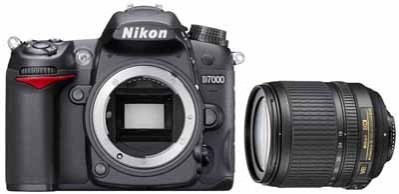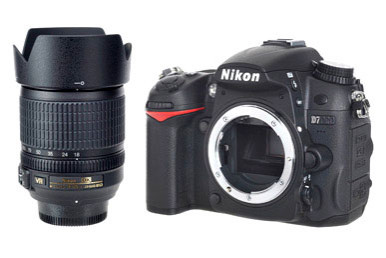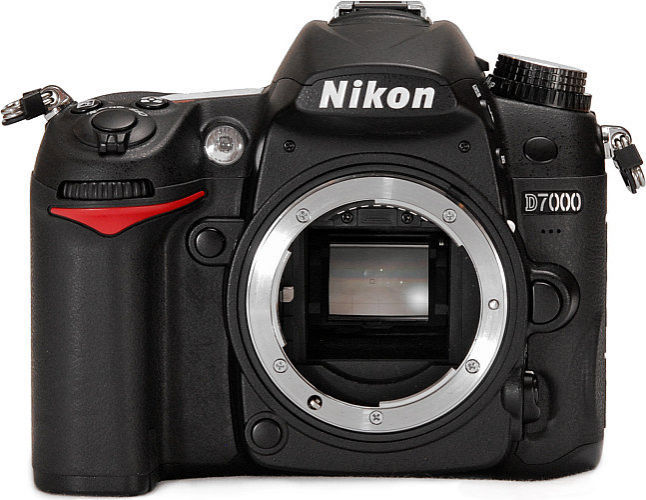Nikon D7000 Digital SLRs
Nikon D7000 Digital SLRs
|
[Aug 01, 2011]
Aungwin
Beginner
Strength:
Low noise up to ISO-1600 The Nikon D7000 has low noise in higher ISO for the price of camera for 16.2MP clean up to ISO-1600. Like the custom pre-set dial of U1 and U2. Similar Products Used: Nikon D-90 |
|
[Jul 22, 2011]
Tommy Peterson
Professional
Strength:
Build
Weakness:
iso noise over 12500 looks crappy and yes there are times that you would want to use it
I love this camera. There are a few things that I am disappointed with but overall I do love this camera and is a huge jump from the d70 we were using. We use it for photographing people, in outdoor sessions. I think it's a perfect camera for that. |
|
[Mar 29, 2011]
still_jj
Expert
Strength:
The new automation is very handy, almost all of the time, and the dark behavior of the sensor is much nicer than my D200. In addition, upconverting this to costco 20x30 format for digital printing is noticably sharper than the D200 images. I'm not sure this is only the result of the additional pixels, because I've also recently got two VR lenses (that work fine on either 200 or 7000) and that may also be involved.
Weakness:
Requires CPU (i.e. type D) lenses.
Nice step up for Nikon. Requires type D or later lenses. Automation less cranky than D200. Focus sometimes surprises you, keep an eye on it. Customer Service Haven't required any. Similar Products Used: D200
|
|
[Mar 28, 2011]
jason
Expert
Strength:
Fully gasketed body with magnesium alloy sections for extra durability/strength.
Weakness:
Video autofocus not as smooth/silent as it could be.
A massive upgrade in image quality,autofocus speed/accuracy and overall durability and usability.
Customer Service Not needed. Similar Products Used: Nikon D90. |
|
[Feb 11, 2011]
arzm
Casual
I get this camera as first my SLR camera. Picture quality, handling, video and battery life are excellent. Location for buttons and menus are very user friendly. I learn work with it about one week. Get Nikon D7000 and enjoy. |
|
[Feb 01, 2011]
Kokopeli
Intermediate
Strength:
16 MP
Weakness:
Limited number of frames can be shot using interval shooting. From the moment I heard about this camera's release, I was very excited and immediately began the process of justifying its purchase. Once I was able to drop the $1200 all I could find was the kits and I really didn't want the lens that came with it so I waited. And waited. And waited some more. It took almost 3 months for me to find just the body, and I must admit that it was well worth the wait.
Customer Service Never used. Similar Products Used: Nikon D100
|
|
[Jan 30, 2011]
wolfbreath
Intermediate
Strength:
-Noise quality
Weakness:
-over exposes on default
In a realistic sense, this camera is not a revolutionary model, or the perfect camera, however it's a very well rounded and capable camera. Currently, compared to most other models, this is one of the best cameras available.
Customer Service N/A Similar Products Used: Nikon D40x
|
|
[Dec 28, 2010]
n8
Intermediate
Strength:
Everything, really.
Weakness:
Video auto-focus
I primarily became interested in the d7000 when I saw I poised as the succussor to the d90, and that it had all the upgrades I was hoping for plus more. I always felt that the d90 was as good of a camera I would need for a long time, and would only upgrade should a body like the d7000 come around. It did, and so I did.
Customer Service n/a Similar Products Used: d40
|
|
[Nov 16, 2010]
jmurphy
Professional
Strength:
In a head to head comparison with my D300 the D7000 matches up with the same 6fps continuous shooting, it has an improved CMOS sensor that has less noise at higher iso’s and has increased the resolution by 4 MP. What sets the D7000 apart from the D300 and the D3 is the obvious introduction of the full 1080p HD video with full time auto focus.
Weakness:
The size of the D7000 for me is both a strength and a weakness. The strength is easy portability and handling while shooting assignments especially when it’s compared to the size of the D3 but it’s also a weakness when it comes to shooting video. I’ve found it nearly impossible to keep the camera steady (I might be anal about this) when using the video mode. Because you are looking through the rear LCD it is difficult to brace the camera when taking video. There are brackets and other accessories on the market to help steady the camera but with those options come an increased investment.
I purchased this camera after reading many articles about it in anticipation of it’s release. The combination of improved quality in low light situations, full 1080p HD video with full time auto focus and the 16.2 MP sensor combined with the 6 frames per second continuous shooting where key features for me.
Customer Service Haven't had to use it yet although Nikon offers a great deal of information and support on their Nikon USA website. Similar Products Used: I've used many different Nikon digital cameras including the D100, D200, D300, D70, D1, D1x, D2x and D3 |
|
[Nov 16, 2010]
mtnbikesteve
Intermediate
Strength:
New 16.1mp CMOS Sensor
Weakness:
I don't believe the video is as good as the Canon 7D I owned a D90 previously and the D7000 is a big improvement over the D90. I think Nikon has definitely got some exciting technology that is going to improve digital photography. I shoot youth baseball with this camera and it works much better than my D90 did because of the increased FPS, higher ISO and improved 39 point AF system. I would recommend this camera to any D90 user. |






















